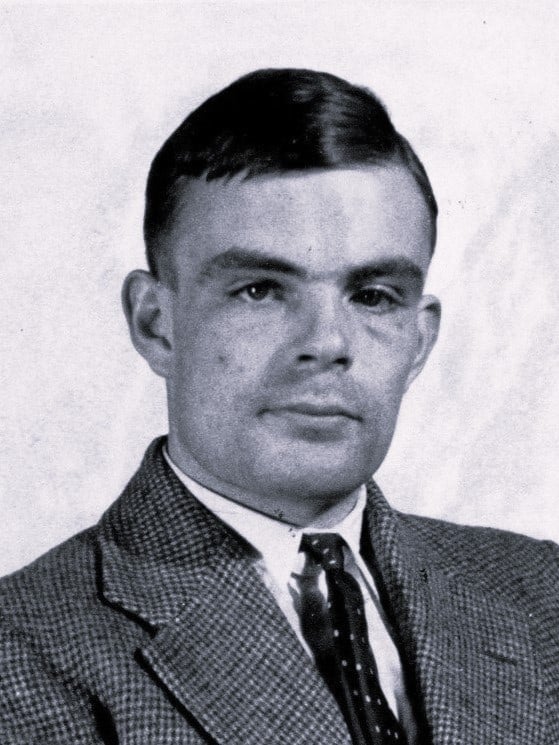
Alan Turing was a mathematician, computer scientist, codebreaker, and philosopher.
©Public domain, via Wikimedia Commons – Original / License
Key Points:
- Alan Turing is best known for his 1936 paper “Turing Machine” that explained a theoretical device that could manipulate symbols according to rules.
- Turing aided in decoding encrypted messages intercepted by the Allies during WWII which were thought to have shortened the war in Europe by two years and saved up to 14 million lives.
- Turing’s work on the Entscheidungsproblem led him to invent a universal computing machine which encapsulates the fundamental principles of computers.
Who Was Alan Turing?
Alan Mathison Turing was an English mathematician, computer scientist, codebreaker and philosopher known for his Turing Test, an imitation game. He is best known, however, for his 1936 paper on the “Turing Machine,” which defines the conceptual framework of a theoretical device that manipulates symbols according to rules.
Turing was highly influential in the development of theoretical computer science, providing a formalization of the concepts of algorithm and computation with the Turing machine, which can be considered a model for a general-purpose computer.
Though he was born in Maida Vale, London, Turing grew up in southern England. He graduated with a degree in mathematics from King’s College at Cambridge University and published an unprovable theorem demonstrating that some mathematical questions can never be answered by computation. At the same time, he set out and proved the halting problem for computer programs to be undecidable: not solvable no matter how much they are interrogated.
In 1938, Alan Turing graduated from Princeton University with a Ph.D. in mathematics. During World War II, he worked for the British Government Code and Cypher School at Bletchley Park, where he led an entire division dedicated to German naval cryptanalysis.
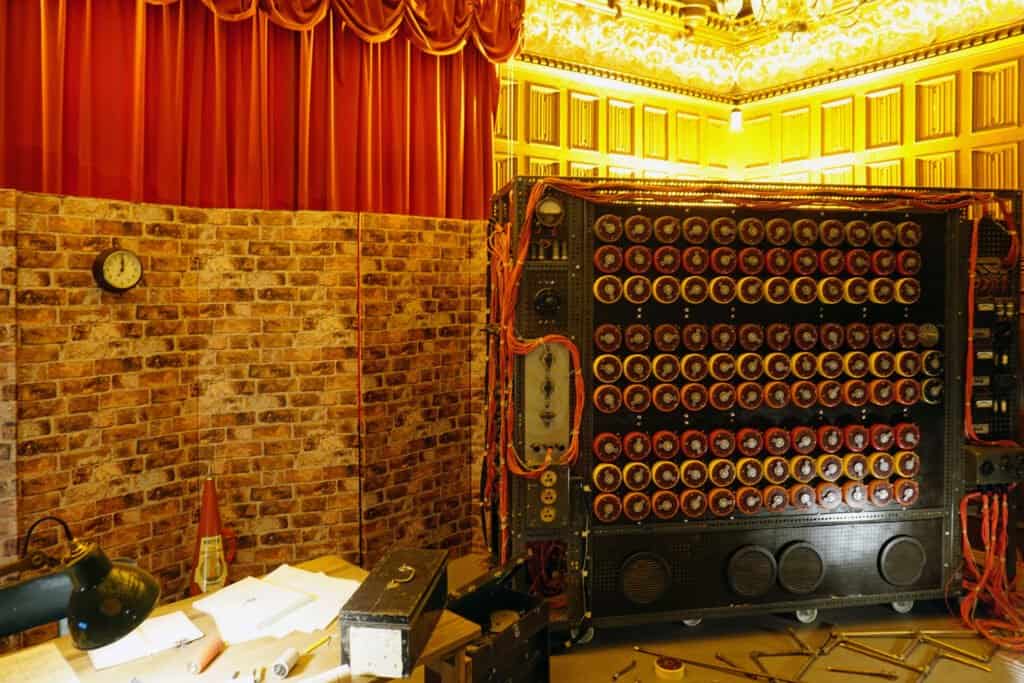
©EQRoy/Shutterstock.com
Despite his father’s initial protestations, Turing learned to program and became a pioneering code-breaker. He was credited with speeding up the breaking of German ciphers during WWII by collaborating with Polish cryptographers who had designed an electro-mechanical machine, the “bombe,” which could potentially crack Enigma code quicker than hand codes. WWII was won due to encrypted messages intercepted by the allies, which were decoded by Turing. It is thought that this shortened the war in Europe by two years and saved up to 14 million lives.
After the war, Turing worked at the National Physical Laboratory and proposed a design for what he called the Automatic Computing Engine (ACE)
Turing’s first full-time scientific and engineering role was as a member of the secretariat of the Physical Sciences Subcommittee. He soon transferred to Max Newman’s Computing Machine Laboratory at the Victoria University of Manchester, where he helped develop early computer prototypes called ‘Manchester machines’.
Turing became interested in mathematical biology, and joined with William Ross Ashby to found a mathematical biology research group named ‘The Ratio Club’, for which Turing proposed his new theory on morphogenesis.
Despite these accomplishments, he was only recognized in his home country for much of his work because it was covered by the Official Secrets Act.
Early Life
Alan Turing, the English scientist was born on June 23, 1912, in Maida Vale. At a young age he showed signs of high intelligence to some of his teachers like those at the well-known independent Sherborne School but many did not particularly respect him save his family.
When Turing attended Sherborne at 13 years old he became especially interested in math and science. After finishing his studies at Sherborne, Turing enrolled in Cambridge to study mathematics and was elected a fellow upon graduation.
Turing in 1936 delivered a paper, “On Computable Numbers, with an Application to the Entscheidungsproblem,” which introduced the idea of a machine (later called Turing Machine and then Modern Computer) capable of computing anything that can be computed.
Over the course of two years, Turing studied math with professors at Princeton. After receiving his Ph.D., he returned to Cambridge and then took a temporary position in 1938 with an organization dedicated to code-breaking called the Government Code and Cypher School.
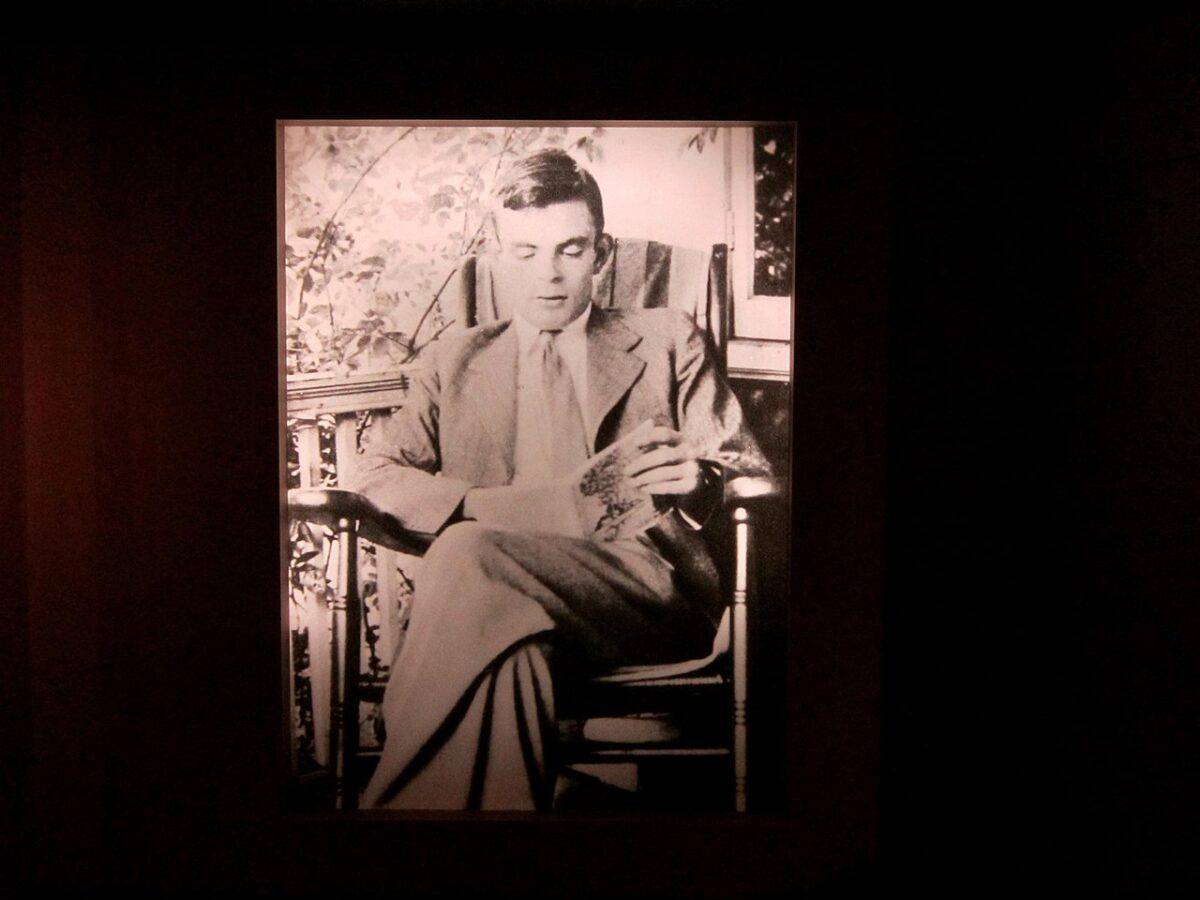
It was around the age of 13 that Alan Turing became interested in mathematics and science. By age 24, he was cracking code.
©Ank Kumar, CC BY-SA 4.0, via Wikimedia Commons – Original / License
Turing was extremely intelligent and explained his ideas in a way that everyone could easily understand. By the age of 24, he started working on cracking the Enigma Code, which turned out to be more difficult than anticipated but by 1939 had broken both the German Naval and Air Force codes.
His work with code-breaking led to him being recruited as an Enigma Code breaker for the Government Code and Cypher School at Bletchley Park — which became like a family too him.
Turing also helped design a machine called Bombe that could find settings that were most likely to produce messages with certain characteristics by searching through all possible settings. This enabled the breaking of many German ciphers including those used by Hitler’s headquarters.
Career
Cryptanalysis and Bletchley Park
World War II was a time of great upheaval and espionage work. Turing himself performed as a codebreaker at center at Bletchley Park as well as creating groundbreaking advances in cryptanalysis. Turing’s contributions were not limited to one area of code-breaking; he also published two papers on mathematical approaches to breaking codes, a contribution that proved so valuable that the GCHQ delayed releasing it for 50 years.
Turing began working for the National Physical Laboratory during World War II, and quickly set out to make significant contributions there. One of his most notable achievements at the time was designing the Automatic Computing Engine; he then made forward-thinking plans that would come to be stored-program computers, which now dominate in maths calculations across three centuries.
Though a complete version of the ACE never materialized, its concept has been used as a model by tech corporations worldwide for several years, influencing the design of the English Electric DEUCE and American Bendix G-15 — credited by many in the tech industry as the world’s first personal computer — among other computer models.
Turing continued his life of intellectual pursuits, holding various high-ranking positions in the math department and computing lab at the university over a number of years. Interested in the effects of technology on human behavior, it was in 1950 when Turning first addressed the topic in his article “Computing Machinery and Intelligence.” To explore this philosophical question, he proposed an experiment known as the “Turing test” — which was a sort of imitation game. The goal of this imitation game is to examine whether or not a computer can be made intelligent enough to fool a person into thinking they are going head-to-head with another human being.
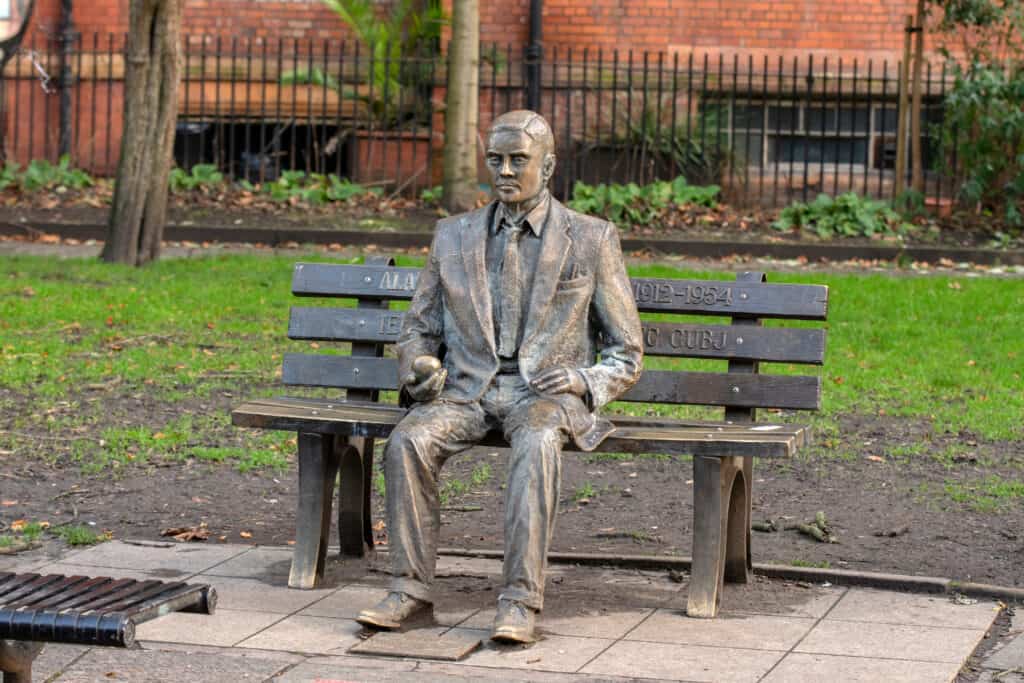
©Dutchmen Photography/Shutterstock.com
What Is Alan Turing Known For?
The Entscheidungsproblem
A mathematician called a method effective only if it could be solved by a human without the aid of an electronic computer. Turing worked with computers, but they were not yet in existence so he relied on human assistance to solve problems that would have been easily openable through “computers”. The Entscheidungsproblem is a fundamental mathematical problem that seeks to determine whether something can be proven by examining the given system.
Turing and Alonzo Church independently showed that in general, there is no way to show a consistent formal system of arithmetic has an effective decision method. Even some purely logical systems are not demonstrably decidable.
Even though some mathematicians hope that a formal system can reduce all of mathematics to computer-supported methods, the results by Kurt Gödel dashed their hopes.
Turing’s work on the Entscheidungsproblem led him to invent a universal computing machine, which encapsulates the fundamental principles of computers.
The Church-Turing Thesis and Turing Machines
In Turing’s argument about the Entscheidungsproblem, he claimed that everything computable by humans can also be computed by a universal Turing machine. Church’s argument in the above work is important because it shows that not all human-computable functions are identical to what he called lambda-definable functions (functions on the positive integers whose values can be calculated by repeated substitution).
Turing showed in 1936 that Church’s thesis was equivalent to his, by proving that every lambda-definable function is computable by the universal Turing machine and vice versa.
Turing devised a mathematical model in 1936 which Church later acknowledged as superior to his own. This model of Turing is now widely referred to as “computability by the Turing machine”.
Alan Turing: Marriage, Divorce, Children, and Personal Life
Engagement
Turing’s marriage proposal was short-lived as he proposed to colleague and cryptanalyst, Joan Clarke in 1941. This would be the closest Alan Turing would come to having a family of his own.
Tragedy
While walking along Oxford Road in Manchester, Alan Turing met Arnold Murray. A 19-year-old unemployed man, Murray accepted Turing’s invitation to lunch. Murray told Turing that they were friends, and after the police investigation revealed their relationship, Murray admitted to knowing Turing.
Turing was eventually convinced to plead guilty by the advice of his brother and own solicitor, and he entered a plea of guilty. The case, Regina v. Turing and Murray, was brought to trial on 31 March 1952. Turing was convicted and given a choice between imprisonment or probation. Turing’s conviction led to his security clearance being removed and prevented him from continuing working on cryptographic consults for GCHQ, the British signals intelligence agency.
After being convicted in 1952, Alan Turing wasn’t allowed to enter the United States, but he was free to visit other European countries. In common with all of the people who had worked at Bletchley Park during World War II, Turing was prevented from discussing his work under the Official Secrets Act.
Death
Turing died on June 8, 1954, found dead by his housekeeper. The cause of death was determined to be cyanide poisoning. The circumstances surrounding Alan Turing’s death remain a mystery, but it is widely assumed that he committed suicide by eating an apple, which may have contained the poison cyanide.
An inquest concluded that Turing had taken his own life. Biographers, such as David Leavitt and Andrew Hodges, have speculated that he was re-enacting a scene from the Walt Disney film Snow White and the Seven Dwarfs (1937), which may relate to him putting for himself what was in effect one last piece of work.
Both Leavitt and Hodges noted that Turing took delight in the scene when the Queen dips her apple into poison.
Historians have different interpretations of how Turing died. Some believe he ingested the cyanide that killed him accidentally. Turing set up a process to dissolve gold with potassium cyanide in his spare room. The autopsy findings suggested that the poison was inhaled, and Turing would often eat an apple before bed which would be discarded half-eaten. Furthermore, Turing is said to have borne his legal setbacks and hormone treatment well “with good humor” up until his death.
To be sure he accomplished his tasks, Turing created a list of things to do when he got back to the office.
On Saturday, December 14, 1952, Turing ingested what may have been chemistry chemicals that were found in an unlocked cabinet. His mother asserted that those would not have caused the poisoning and instead said it had likely been accidental.
Biographer Andrew Hodges speculated that Turing arranged the delivery of a radio transmitter to his mother with the intention of it being used as a suicide device, thus allowing her plausible deniability.
Alan Turing: Awards and Achievements
Alan Turing has been honored in various ways in Manchester, the city where he worked towards the end of his life. In 1994, a stretch of the A6010 road (the Manchester city intermediate ring road) was named “Alan Turing Way”. A bridge carrying this road was widened, and carries the name Alan Turing Bridge.
A memorial statue of Turing was unveiled in Manchester on June 23, 2001 and placed between the University of Manchester building on Whitworth Street and Canal Street. It depicts the “father of computer science” sitting on a bench at a central position in the park.
At the foot of Alan Turing’s statue, a plaque reads “Father of computer science, mathematician, logician, wartime codebreaker”. It also quotes Bertrand Russell as saying that “Mathematics is the science of pure thought.
Time magazine named Turing as one of the “100 Most Important People of the 20th century” and stated, “The fact remains that everyone who taps at a keyboard, opening a spreadsheet, or word-processing program is working on an incarnation of a Turing machine.”
The blue plaque to commemorate John Maynard Keynes was unveiled on June 23, 2012 and installed at King’s College’s Keynes Building.
The Bank of England unveiled the design for a new £50 note, featuring Alan Turing’s portrait, on March 25 before its official release on June 23. Although Turing was selected as the new face of the currency following a nomination period earlier this year, his image will appear on all currency denominations from September 2020.
Alan Turing: Published Works and Books
- Mechanical Intelligence, ed. Darrel Ince
- Morphogenesis, ed. P. T. Saunders
- Pure Mathematics, ed. J. L. Britton
- Wittgenstein’s Lectures on the Foundations of Mathematics, Cambridge, 1939
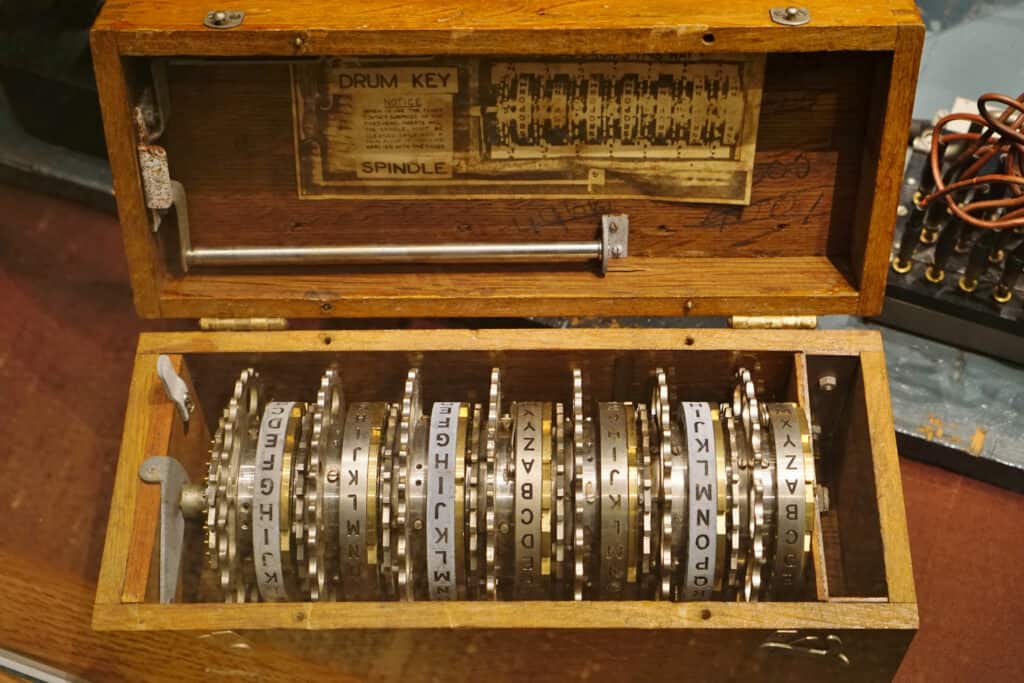
©EQRoy/Shutterstock.com
Alan Turing Quotes
These are some of the most well-known quotes from Alan Turing:
- “We can only see a short distance ahead, but we can see plenty there that needs to be done.”
- “Science is a differential equation. Religion is a boundary condition.”
- “Machines take me by surprise with great frequency.”
- “I propose to consider the question, ‘Can machines think?”
- “Mathematical reasoning may be regarded.”
- “A computer would deserve to be called intelligent if it could deceive a human into believing that it was human.”
- “We are not interested in the fact that the brain has the consistency of cold porridge.”